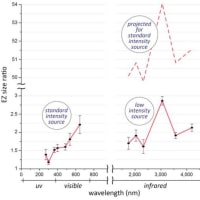Thomas Levy氏の著書に記載されている各種のウイルス・細菌に対するビタミンCの適用の記事の翻訳リストは、次のブログ記事にまとめてあります:
Thomas Levy ビタミンCによる感染症と毒物の治療の本の効果のまとめ
Levy p.89インフルエンザ
Thomas Levy、ビタミンCによる感染症と毒物の治療の本
Curing the Incurable: Vitamin C, Infectious Diseases, and Toxins (英語) ペーパーバック – 2011/8
治癒不可能なものを治す: ビタミンC、感染症疾患、及び毒素
Thomas E. Levy (著)
89
Influenzaインフルエンザ (Curable and Preventable治癒可能、予防可能)
Influenza ("flu") is a very common viral infection that is often asSociated with, or evolves from, a head cold.
インフルエンザは、鼻風邪に関連するか、又は鼻風邪から展開する非常に一般的なウイルス感染である。
Even though influenza can sometimes also affect the lungs and resemble viral pneumonia, it should be noted that viral pneumonia primarily affects the lungs while influenza seems to affect more of the body in general.
インフルエンザは、時々、肺に影響し、ウイルス性肺炎に類似するが、ウイルス性肺炎は主として肺に影響し、インフルエンザは一般的に身体のより多くの部分に影響することに注意すべきである。
Diffuse muscular pain is especially characteristic of influenza, accompanying the less specific symptoms of headache, weakness, fever, and chills.
広範性の筋肉痛がインフルエンザの特に特徴的な性質であり、特異的ではない症状の頭痛、虚弱、熱、寒気を伴う。
While no traditional treatments are known to cure influenza, rimantadine and amantadine are antiviral drugs that are felt to lessen symptoms and speed recovery in uncomplicated cases,
インフルエンザを治療する伝統的な治療法は知られていませんが、リマンタジンとアマンタジンは、合併症のない症例で症状を軽減し、回復を早めると考えられている抗ウイルス薬です。
Klenner (July 1949) did not specifically detail his vitamin C treatment of influenza.
クレナー(1949年7月)は、彼のインフルエンザのビタミンC治療を特に詳細には述べなかった。
Probably one reason for this was because he had reported such profound successes with so many other advanced and life-threatening viral diseases.
恐らくこの理由の1つは、非常に多くの他の進展した生命を脅かすウイルス疾患で、非常に完全な成功を報告したからである。
Certainly, curing a comatose patient with encephalitis or eliminating the paralysis of a polio patient must have had precedence over Klenner's vitamin C experience with the flu.
確かに、脳炎による昏睡患者の治癒、またはポリオ患者の麻痺の除去は、インフルエンザに対するクレナーのビタミンCの経験よりも優先したに違いない。
Klenner did say, however, that he treated many cases of influenza with vitamin C.
しかしながら、クレナーは、多くの症例のインフルエンザをビタミンCで治療したと述べた。
He also implied complete success with this disease as well, commenting only that the "size of the dose" and the "number of injections" of vitamin C needed were directly related to the fever response to therapy and to the duration of the disease.
彼はまた、インフルエンザでも同様に完全な成功をほのめかし、
必要なビタミンCの「投与量のサイズ」と「注射回数」が、治療に対する熱反応と疾患の期間と直接的に関連したとだけ見解を述べた。
90
Magne (1963) reported on the vitamin C treatment of 130 cases of influenza.
マグネ(1963)は、インフルエンザ130症例のビタミンC治療を報告した。
Males and females, ranging in age from 10 to 40 years, were treated.
男性と女性、年齢は10歳から40歳を治療した。
Treatment was given for one to three days with doses of vitamin C up to 45,000 mg.
ビタミンC投与量45gまでにより1日から3日間治療した。
In spite of this variable approach, Magne reported good success, with 114 recovering and only 16 not significantly responding.
この変動する方法にも関わらず、マグネは良好な成功を報告し、114人(88%)が回復し、16人(12%)だけが有意に反応しなかった。
As has already been seen repeatedly in Klenner's Work, failing to provide an adequate dose of vitamin C can be expected to show little or no clinical effect.
既にクレナーの研究で繰り返し見られるように、適切な投与量のビタミンCを供給できなければ、臨床効果がほとんどないか、または全くない。
以下はインフルエンザに類似した犬とネコのジステンパーに関する解説
Wikipedia犬ジステンパー
https://ja.wikipedia.org/wiki/%E7%8A%AC%E3%82%B8%E3%82%B9%E3%83%86%E3%83%B3%E3%83%91%E3%83%BC
犬ジステンパーに特異的な治療法は無く、一般的に予後は悪い。二次感染を防ぐための抗生物質投与、脱水への対処として輸液、栄養補給が行われる。CDV感染の予防は弱毒生ワクチンによって行われる。
(補足: ビタミンCがジステンパーに有効である事実は無視されている)
Another virus somewhat akin to the influenza virus is the one that causes the dog and cat distemper complex.
インフルエンザ・ウイルスに幾分類似した別のウイルスには、犬とネコのジステンパー複合体を起こすものがある。
Distemper is an infectious disease of the respiratory tract and sometimes the gastrointestinal tract, with associated fever, dullness, loss of appetite, and discharge from the eyes and nose.
ジステンパーは、呼吸器と時々胃腸管の感染疾患であり、熱、倦怠感、食欲不振、目と鼻からの分泌物を伴う。
When dogs and cats get sick enough with distemper and do not recover spontaneously, they are often put to sleep.
犬とネコがジステンパーに十分かかり、自然に回復しないならば、しばしば眠る。
As with So many human viral infections, this animal viral disease is readily and easily curable with adequate doses of vitamin C.
非常に多くの人のウイルス感染のように、動物のウイルス疾患は、適切な投与量のビタミンCにより迅速に簡単に治癒可能である。
Belfield (1967) reported excellent results in the treatment of 12 dogs and cats.
ベルフィールド(1967)は、12匹の犬と猫の優れた結果を報告した。
He generally gave dogs 2,000mg of intravenous vitamin C each day for three days.
彼は通常、犬に2000mgの静脈投与のビタミンCを毎日、3日間に渡り投与した。
For cats and small dogs he gave 1,000 mg of vitamin C intravenously per day for three days.
猫と小さな犬には、1日1000mgの静脈投与のビタミンCを3日間に渡り投与した。
All 12 animals recovered completely, even though two of them had been given no hope of recovery by other veterinarians,
12匹の動物は全て完全に回復した、それらの内の2匹は、他の獣医により回復の望みはないとされていた。
Amazingly, the editor made some explanatory comments at the start of Belfield's article to justify its publication, stating that veterinarians were "still plagued by the age-old problem of what to do with the dog that is already sick with distemper."
驚くべきことに、その編集者は、その出版を正当化するために、ベルフィールドの論文の冒頭に、幾つかの解説コメントをしており、獣医は「既にジステンパー病にかかっている犬をどのような処置するかという古くからの問題にまだ悩まされている」と述べている。
It was also noted that editors were especially "inclined to view this subject as a hot potato and to apply themselves to less controversial matters."
その編集者は、特に「この課題を難問であるとみなし、そして議論の少ない問題であるとして扱っている」とも書かれている。
Obviously anticipating negative feedback from Belfield's article, the editor added that "the chuckles of our friends in research as they read these Words" could almost be heard.
明らかにベルフィールドの論文からネガティブな反応を予期して、その編集者は「これらの言葉を読む際の研究している我々の友人の笑い声が」ほとんど聞こえてくるようだと付け加えた。
In a defensive posture, the editor challenged readers not to brand the journal editors as "cracked" or the reporting clinicians as "quacks," but to keep their minds open.
防御姿勢で、その編集者は、雑誌の編集者を「頭がおかしい」と決めつけたり、または報告している臨床医を「偽医者」と決めつけたりせずに、心をオープンにするように読者に要求している。
The editor asserted that the "fate of the unattended distemper-sick dog is well known, and euthanasia just doesn't carry the professional dignity it did 25 years ago."
その編集者は、「世話をされないジンステンパー病の犬の運命は良く知られている、そして安楽死は、25年前のような専門的な威厳をもたらさない」と述べている。
This editor realized that readers of the journal did not have the most open of minds, but that the information still had to be published.
この編集者は、この雑誌の読者は最もオープンな心を持っていないが、この情報はそれでも出版されねばならないことを理解していた。
If science is not open-minded, it has no dignity and little validity.
もし科学がオープンな心を持っていなければ、尊厳も正当性もない。
91
Motivated by the clinical successes reported by Belfield in 1967, Leveque (1969) decided to start treating his dogs suffering from distemper with vitamin C.
1967年にベルフィールドにより報告された臨床的な成功に動機づけられて、レベック(1969)はジステンパーにかかった彼の犬をビタミンCで治療することを決めた。
Leveque treated a total of 67 cases of canine distemper complex, and he also reported very good results.
レベックは、合計67例の犬のジステンパー複合体を治療し、彼もまた非常に良い結果を報告した。
He commented that recovery from this disease "can be markedly improved" by including vitamin C in the treatment regimen.
この病気からの回復は、治療計画にビタミンCを含めることにより、「著しく改善された」と彼は述べた。
Klenner (1974) was able to later corroborate Belfield's work.
クレナー(1974)は、後にベルフィールドの研究が真実であることを裏づけることができた。
Klenner noted that he had "cured many dogs suffering with distemper" by giving injections of several grams of vitamin C every two hours.
クレナーは、2時間おきに数グラムのビタミンCの注射により、「ジステンパーに罹患した多くの犬を治癒させた」とクレナーは述べた。
Klenner also noted that vitamin C had been discounted as being of little or no value against distemper since dogs are animals that can make their own vitamin C.
犬は必要なビタミンCを合成できる動物であるため、ビタミンCはジステンパーに対して価値がほとんどないか、全くないとして無視されていたともクレナーは述べた。
However, dogs (and cats) cannot produce the massive amounts of vitamin C that some wild animals can make, and Klenner demonstrated repeatedly in his work that many viral infections will not show a positive response until a certain threshold of vitamin C administration is reached.
しかしながら、犬(と猫)は、幾つかの野生動物が作れるほどの大量のビタミンCを合成できない、そしてビタミンC投与の一定の閾値に達するまで、多くのウイルス感染はポジティブな反応を示さないことを、クレナーは彼の研究で繰り返し示した。
This means that dogs and cats can only be expected to protect themselves from mild viral and infectious challenges.
このことは、犬と猫は、緩和なウイルスと細菌感染から自分自身を保護することが期待できるだけであることを意味している。
Large challenges, however, can rapidly and irreversibly sicken them if additional amounts of vitamin C are not forthcoming
しかしながら、追加(余分)のビタミンCが手に入らなければ、大規模な暴露は急速に非可逆的にそれらを病気にする。
The ability of vitamin C to effectively treat the influenza virus is consistent with the fact that significant influenza infections are asSociated with a great deal of oxidative stress, a condition ideally suited for the potent antioxidant properties of vitamin C.
ビタミンCが効果的にインフルエンザ・ウイルスを治療する能力は、重大なインフルエンザ感染は、ビタミンCの強力な抗酸化能力に理想的に適した状態である規模な酸化ストレスと関連しているという事実と一致する。
Buffinton et al. (1992) showed that an influenza virus infection in mice was associated with increased oxidative stress in the lungs.
バフィントン等(1992)は、マウスにおけるインフルエンザ・ウイルス感染は肺における酸化ストレスの増加と関連していることを示した。
In a similar experimental model, Hennet et al. (1992) also showed that influenza-infected mice had lowered levels of vitamin C and an overall lowered antioxidant status.
類似した実験モデルで、へネット等(1992)は、インフルエンザに感染したマウスは、ビタミンC濃度が低下し、全般的な抗酸化状態が低下していることも示した。
This is especially significant since mice readily synthesize substantial amounts of their own vitamin C.
マウスは、大量のビタミンCを自分で合成しているので、これは特に意義深い。
It would appear that a virus such as the influenza virus can rapidly overwhelm the resistance of even a vitamin C-synthesizing animal like the mouse.
インフルエンザ・ウイルスのようなウイルスは、マウスのようなビタミンCを合成する動物の抵抗力でさえも急速に打ち負かすことができるように思われる。
This further underscores the need to supplement vitamin C promptly and in very high doses to effectively combat influenza and other viral diseases.
このことは、迅速なビタミンC補給と非常に高投与量で効果的にインフルエンザ及び他のウイルス疾患と戦う必要性をさらに強調している。
92
Although reported in less detail than some of the other viral diseases, it nevertheless appears that influenza responds rapidly to optimal vitamin C dosing.
幾つかの他のウイルス疾患よりもあまり詳しく報告されていないが、インフルエンザは、最適なビタミンC投与に急速に応答するように思われる。
Some of the viral diseases cured by Klenner and others were most likely mixed viral combinations that included influenza.
クレナー及びその他の人により治療されたウイルス疾患の幾つかは、インフルエンザを含むウイルスの混合した組み合わせであったようである。
As was noted earlier, mixed viral syndromes generally have a greater viral load and require more intensive vitamin C therapy,
前に述べたように、混合したウイルス症候群は、より多くのウイルス負荷があり、より強力なビタミンC治療を必要とする。
Therefore, any time that Klenner cured a mixed viral syndrome that included influenza viruses, it is probably reasonable to conclude that the influenza virus alone could have been eradicated with less aggressive vitamin C dosing.
それ故、クレナーがインフルエンザ・ウイルスを含む混合したウイルス症候群を治療した時にはいつでも、インフルエンザ・ウイルス単独の場合はより少量のビタミンC投与量で根絶できたと容易に合理的に結論づけることができる。
Influenza is yet another viral disease that is curable, and adequate maintenance vitamin C should easily prevent it from ever being contracted in the first place.
インフルエンザは、治癒可能なウイルス疾患である、そして適切な維持量のビタミンCは、まず最初にそれにかからないように容易に予防できるはずである。























